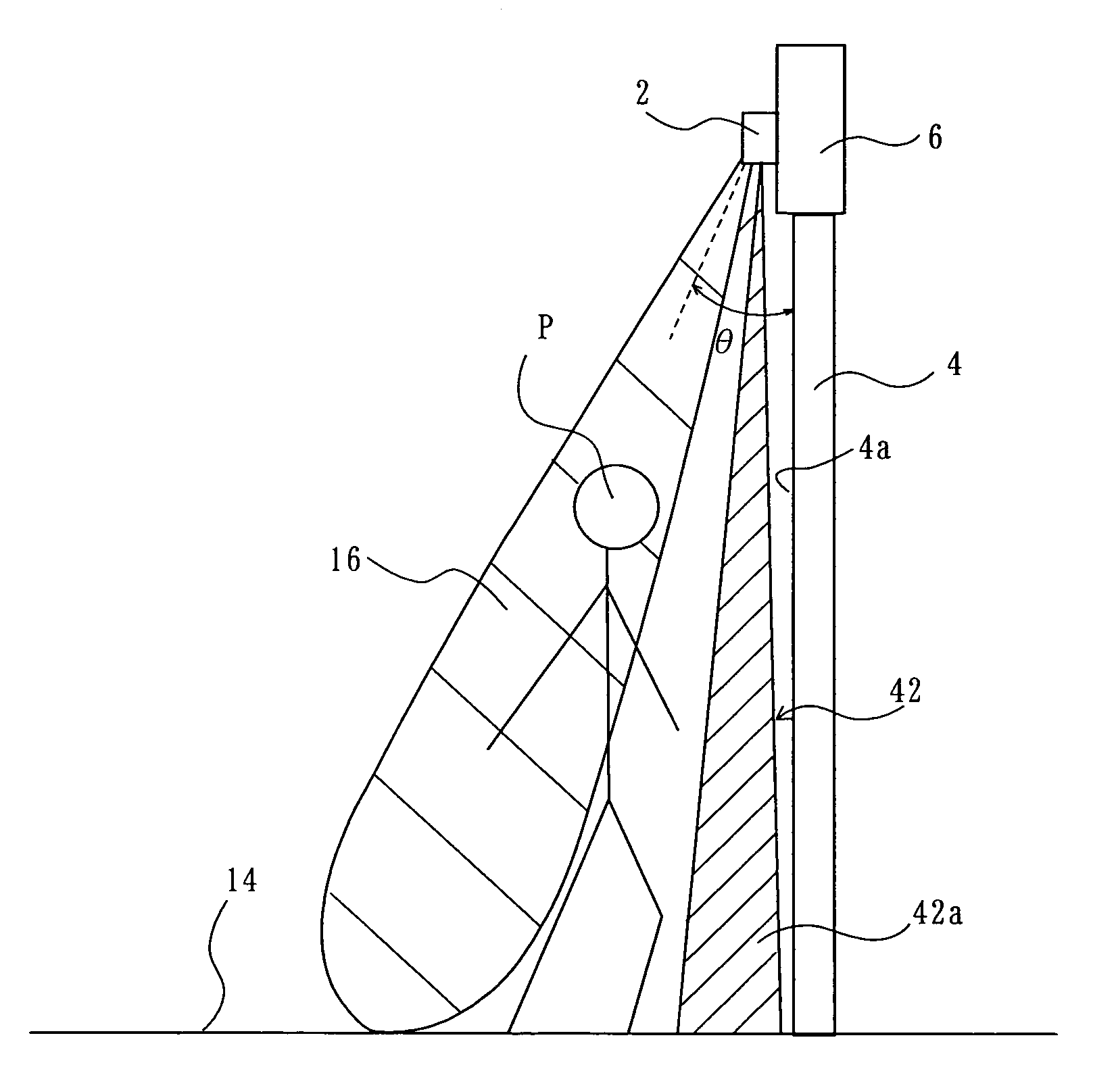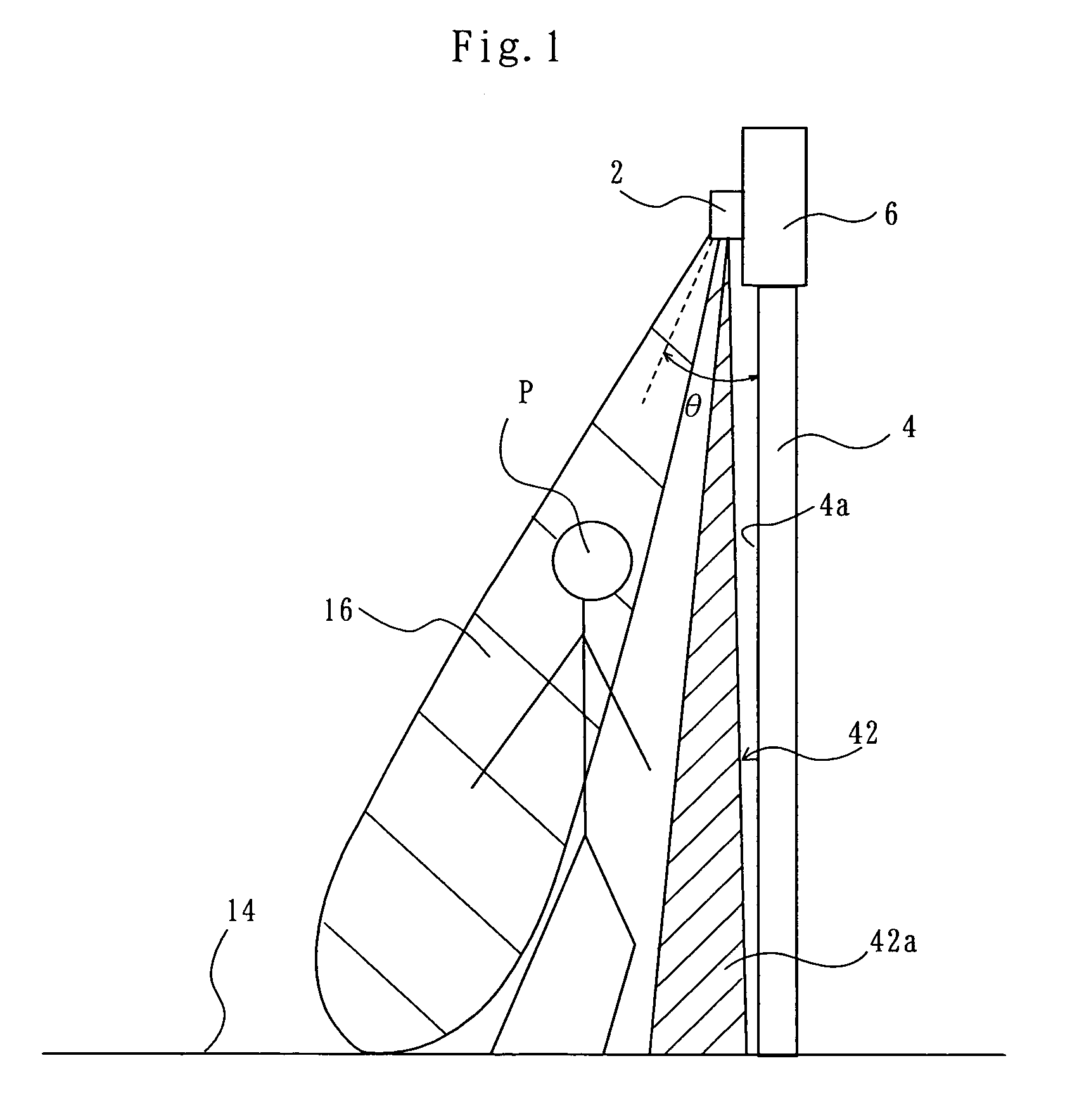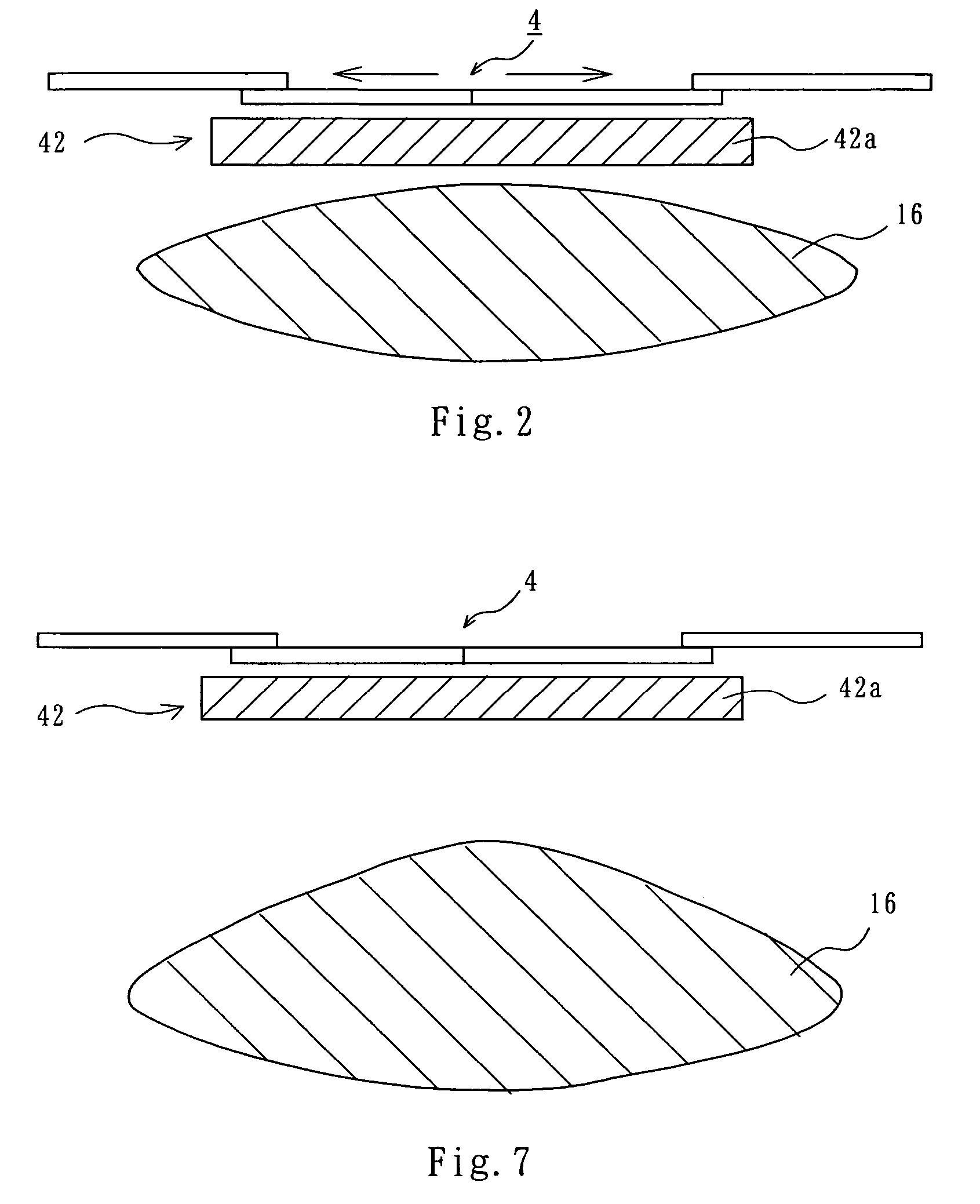Composite sensor for door
a composite door sensor and sensor technology, applied in the direction of counting objects on conveyors, using reradiation, instruments, etc., can solve the problems of large non-detection zone, inability to detect standing still in the vicinity of the door, and influence of external disturbances on the light used in composite door sensors of the above-described typ
- Summary
- Abstract
- Description
- Claims
- Application Information
AI Technical Summary
Benefits of technology
Problems solved by technology
Method used
Image
Examples
first embodiment
[0041]As shown in FIG. 1, a composite sensor 2 according to the present invention is installed on a lintel 6 above an automatic door 4. The door 4 shown in FIG. 1 is a double sliding door as shown in FIG. 2, which includes two door panels pulled open and closed away from and toward each other.
[0042]As shown in FIG. 4, the composite sensor 2 has a radio-wave transmitting-receiving module 8, in which a radio-wave transmitter-receiver section 12 (FIG. 5) is housed. The radio-wave transmitter-receiver section 12 transmits a radio wave, e.g. a microwave, from an antenna 10 and receives a reflected microwave to detect a moving object, e.g. a pedestrian. The module 8 is disposed to send and receive a radio wave toward and from a floor 14 as shown in FIG. 1. The transmission and reception of the radio wave produces a radio-wave detection zone 16 extending from the module 8 to the floor 14. The shape of the radio-wave detection zone 16 is dependent on the directivity pattern of the antenna 1...
second embodiment
[0067]As shown in FIG. 12, door position detecting means for sensing whether the door 4 is in its closed position is used in association with the CPU 50. The door position detecting means may be a limit switch 60, for example. The limit switch 60 is disposed in the lintel 6. The limit switch 60 is turned ON when the door 4 is in the closed position, and otherwise is turned OFF. The CPU 50 monitors the limit switch 60 as to find whether it is ON or OFF. As shown in FIG. 13, if the switch 60 is ON, the result of detection in the safeguard zone 42 is invalidated. In other words, when the limit switch 60 is ON, a safeguard zone signal, i.e. a received-light representative signal, inputted to the CPU 50 from the light emitter-receiver section 20 is ignored, and it is treated as if there is no pedestrian in the safeguard zone 42. On the other hand, when the limit switch 60 is OFF, the result of detection in the safeguard zone 42 is made valid and is reflected in the sensor output.
[0068]T...
third embodiment
[0081]The CPU 50 of the third embodiment operates to validate the result of detection in the safeguard zone 42 only when an object or pedestrian is detected in the activation zone 16, and otherwise invalidate the result of detection in the safeguard zone 42.
[0082]For that purpose, the CPU 50 operates to execute the safeguard zone evaluation processing, along the procedure as illustrated by a flow chart shown in FIG. 17. First, the CPU 50 makes a judgment, in Step S31, as to whether an object has been detected in the activation zone 16. This judgment is made based on the result of detection obtained in Step S3 shown in FIG. 14.
[0083]If it is judged, in Step S31, that an object has been detected, the CPU 50 advances to Step S33, where it validates the result of detection in the safeguard zone 42, and ends the safeguard zone evaluation processing of FIG. 17. On the other hand, if no object has been detected in activation zone 16, the CPU 50 advances from Step S31 to Step S35 and invali...
PUM
 Login to View More
Login to View More Abstract
Description
Claims
Application Information
 Login to View More
Login to View More - R&D
- Intellectual Property
- Life Sciences
- Materials
- Tech Scout
- Unparalleled Data Quality
- Higher Quality Content
- 60% Fewer Hallucinations
Browse by: Latest US Patents, China's latest patents, Technical Efficacy Thesaurus, Application Domain, Technology Topic, Popular Technical Reports.
© 2025 PatSnap. All rights reserved.Legal|Privacy policy|Modern Slavery Act Transparency Statement|Sitemap|About US| Contact US: help@patsnap.com



